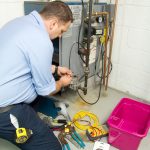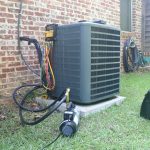Cooling Things Off: What You Need to Know About the R-22 Refrigerant Phase Out
For years, HVAC systems were built for the use of R-22 refrigerant. However, once the EPA and other environmental organizations determined that the chemical compound was depleting the Ozone Layer, action was swiftly taken with the advent of the Montreal Protocol.
As of 2003, R-22 production was tapered and by 2010, all importation and production of the product was halted in the US. Now, R-22 will be completely banned when the calendar turns to 2020 (aside from recycled supplies).
So how does this affect you and your AC unit? Here’s a quick manual to keep you informed.
Supply, Demand and Your Wallet
If your unit was installed before 2010, chances are very high that it utilizes R-22 refrigerant. And thus, due to age, it will experience more and more leaks and mechanical issues as the unit ages. Check the label on the side of your unit or the owners manual to know for sure.
You’re faced with a choice whether ride it out until it breaks or do something proactive about it now. The result will always be the same — you’ll have to get a new unit. The question is when and how much will it hurt?
If you choose to “ride it out,” know this — with an ever-dwindling supply, Adam Smith’s invisible Hand of Economics will take center stage. Prices will continue to rise at a rapid pace as we draw closer to 2020.
Remember, this is now a highly controlled and partially banned substance. Any company or technician offering system charges or refills of R-22 must be EPA-certified. This means they incur a litany of costs including recycling & reclamation fees, labeling, reporting, and disposal/destruction.
And guess who those costs get passed on to? You betcha. YOU.
Beware the Quick Fix
Some providers might offer you a “drop-in” solution in an effort to retrofit your HVAC unit for R22 replacement. Don’t be fooled. There is no magic bullet.
In fact, this can end up costing you more when it’s all said and done.
Different refrigerants operate at different pressures. Transitioning from R-22 refrigerant to the current R410a means that crucial components will have to be swapped out. This can add up big time.
Not to mention this most likely voids the manufacturer’s warranty. To avoid these pitfalls and get a straight scenario, always hire a licensed and certified technician.
So Long, R-22 Refrigerant
The future starts now. R-22 is going away and getting out in front of the problem is the safest and most cost-effective way for you to emerge on the other side with a new unit and peace of mind.
It will take time and planning to determine what the best roadmap to success is. If you’re a business or a multi-dwelling housing owner, your decisions are increasingly critical to your solvency and cash flow. The longer a system is left unaddressed, the more problems like Sick Building Syndrome or disputes about lease terms will mount up.
If you want as little downtime as possible in your HVAC comfort levels and the operation of your business, your time to act is now. R-22 refrigerant shouldn’t linger over you like a dark cloud.
Contact us today and let us guide you through your options.





